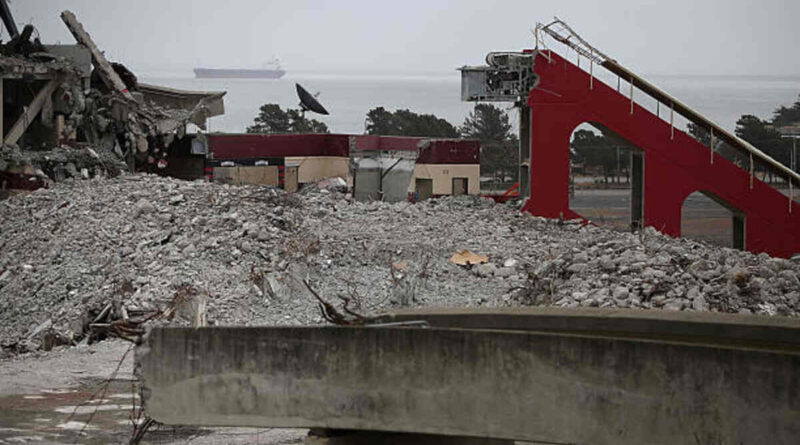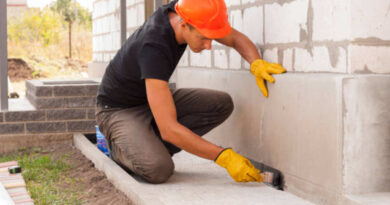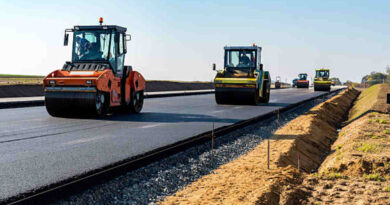Eco-Friendly Demolition Practices in Miami
Hey there! Thinking about knocking down a building or two in Miami? Whether you’re an aspiring novelist looking for inspiration in urban transformation, a content marketer aiming to create engaging stories about eco-conscious practices, or a graduate student interested in sustainable urban development, you’ve landed in the right place. Let’s dive into the world of eco-friendly demolition practices in Miami and explore how you can make a positive impact while tearing things down. Read the Best info about demolition Miami FL.
Understanding Demolition in Miami
Demolition is not just about bringing down walls and structures. In Miami, a city bustling with growth and change, demolition practices are increasingly focusing on sustainability. Traditional demolition can create a lot of waste and environmental harm, but eco-friendly methods aim to reduce this impact. But why should you care? Well, as a writer, understanding these practices can add depth to your narratives, whether you’re crafting a novel or developing content that resonates with environmentally conscious audiences.
The Evolution of Demolition Practices
Over the past few decades, the approach to demolition in Miami has shifted significantly. This evolution is driven by a growing awareness of environmental issues and the need to preserve natural resources. Traditional methods, which often involved indiscriminate tearing down of buildings, are being replaced by more thoughtful approaches. This change is not only about protecting the environment but also about reshaping the way we think about urban development. For writers, this evolution provides a rich tapestry of themes to explore, from the clash between old and new to the innovative solutions that arise from necessity.
The Role of Legislation
Miami’s push towards sustainable demolition is also heavily influenced by local and federal legislation. Laws and regulations are in place to ensure that demolition practices minimize their environmental footprint. These regulations cover aspects such as waste management, recycling, and emissions reduction. For those interested in policy and urban planning, understanding the legal framework can provide a deeper insight into how cities like Miami are leading the way in eco-friendly practices. This knowledge can be invaluable for creating content that informs and educates audiences about the importance of sustainable development.
Community Influence on Demolition Practices
Community involvement plays a crucial role in shaping demolition practices in Miami. Local residents, environmental groups, and other stakeholders often advocate for more sustainable approaches. Their voices can influence decisions, pushing for methods that preserve historical structures and reduce environmental impact. For content creators and storytellers, engaging with these community narratives can add authenticity and depth to their work. By highlighting community efforts, writers can craft compelling stories that resonate with readers and inspire action.
Why Go Green with Demolition?
Miami, with its vibrant culture and rich history, is a place where sustainability is becoming more than just a buzzword—it’s a necessity. Eco-friendly demolition practices in Miami help:
Minimizing Waste Through Recycling
One of the primary goals of eco-friendly demolition is to minimize waste. By recycling materials like concrete, metal, and wood, you can significantly reduce the amount of waste that ends up in landfills. This process involves careful sorting and processing of materials to ensure they can be reused effectively. For writers and content creators, this approach mirrors the practice of revisiting and refining ideas, ensuring nothing goes to waste in the creative process.
Environmental Protection and Ecosystem Preservation
Protecting the environment is a core principle of sustainable demolition. Using less energy and reducing emissions helps protect Miami’s beautiful beaches and diverse ecosystems. This commitment to environmental stewardship is not just about preserving natural beauty; it’s about ensuring that future generations can enjoy these resources. For storytellers, this theme of preservation can serve as a powerful narrative thread, exploring the relationship between human activity and the natural world.
Cost-Effective Practices and Economic Benefits
Eco-friendly demolition is not just good for the planet; it’s also economically advantageous. Reusing materials can be cost-effective, cutting down on the expenses of new materials. This approach can lead to significant savings for developers and construction companies. For content marketers and writers, the economic benefits of sustainability can provide a compelling angle for stories, highlighting how green practices can lead to financial gain as well as environmental responsibility.
Key Eco-Friendly Demolition Practices
Let’s break down some eco-friendly demolition practices that are gaining traction in Miami. These methods not only help the environment but also provide a fresh perspective for storytellers exploring urban themes.
Deconstruction: A Methodical Approach
Instead of bulldozing everything down, consider deconstruction. This method involves carefully disassembling a building to salvage as many materials as possible. It’s like taking apart a puzzle piece by piece rather than smashing it. Deconstruction requires a detailed assessment of the building, identifying materials that can be reused or recycled. For writers, this approach mirrors the process of revising a draft—meticulously dissecting and reworking elements to create a more refined piece. The careful attention to detail and the ability to see potential in each component are key to both deconstruction and storytelling.
Selective Demolition: Precision and Purpose
Selective demolition focuses on removing specific parts of a structure while preserving others. This targeted approach minimizes waste and allows for the reuse of valuable components. It’s similar to editing your work: keeping the good stuff and trimming the excess. Selective demolition requires a strategic plan, often involving detailed blueprints and a clear understanding of the building’s structure. Content marketers can learn from this method by creating focused, impactful content that resonates with audiences. By honing in on what truly matters, both in demolition and content creation, you can create something that stands out and makes a difference.
Recycling and Reusing Materials: Breathing New Life
In Miami, recycling and reusing demolition materials is a big deal. Concrete can be crushed and reused, metals can be melted down, and even wood can find a new life. This process involves transforming old materials into new products, reducing the need for raw materials and conserving energy. Think of it like upcycling your old stories into new, exciting narratives. For graduate students, this practice underscores the importance of resourcefulness and innovation in academic research. By finding new uses for existing materials, both in construction and research, you can create something innovative and sustainable.
Challenges and Solutions in Eco-Friendly Demolition
Of course, eco-friendly demolition isn’t always a walk in the park. There are challenges, but with every challenge comes a creative solution—just like in writing!
Logistical Hurdles: Planning and Execution
Coordinating the careful dismantling and sorting of materials requires meticulous planning. It’s like structuring your novel or academic paper; without a clear plan, things can quickly get chaotic. In Miami, demolition companies often employ skilled project managers to keep things on track. These managers oversee every aspect of the project, from initial assessments to final clean-up, ensuring that each step is executed efficiently. For writers, the importance of planning cannot be overstated. A well-structured plot or argument is essential for creating a compelling narrative or persuasive piece.
Regulatory Compliance: Navigating the Legal Landscape
Eco-friendly demolition practices must comply with local regulations. Staying informed and meeting these requirements can be daunting, much like ensuring your content meets editorial standards or your academic writing adheres to citation rules. Regulations can cover everything from waste disposal to air quality standards, and keeping up with these rules requires diligence and expertise. In Miami, working with knowledgeable contractors can help navigate these waters. For content creators, understanding and adhering to guidelines is crucial for maintaining credibility and avoiding legal pitfalls.
Community Engagement: Building Relationships
Engaging with the local community is crucial. Just as writers need to connect with their audience, demolition projects in Miami should involve local residents to address concerns and gain support. This involves open communication, public meetings, and collaboration with local organizations. By involving the community, demolition projects can foster goodwill and ensure that local voices are heard. This can inspire writers to incorporate community perspectives into their narratives, enriching their stories with authentic voices. By building relationships with the community, both demolition experts and storytellers can create work that resonates and inspires.
Eco-Friendly Demolition: A Case Study
To illustrate, let’s look at a real-world example of eco-friendly demolition in Miami.
The Miami Marine Stadium Project: A Beacon of Sustainability
The Miami Marine Stadium, an iconic structure, underwent a partial demolition with an eco-friendly twist. Instead of razing the building, preservationists worked to salvage and repurpose materials, embodying the spirit of sustainable practices. This project involved meticulous planning, collaboration with local authorities, and innovative thinking. The stadium’s unique design and historical significance made it a prime candidate for an eco-friendly approach. This project highlights the potential for creativity and innovation in demolition, much like crafting a compelling narrative from a historic backdrop. For writers, the stadium’s story offers a rich source of inspiration, demonstrating how sustainability can be woven into the fabric of urban development.
Final Thoughts
Incorporating eco-friendly demolition practices in Miami isn’t just about saving the planet—it’s about crafting a future where urban development and environmental responsibility go hand in hand. Whether you’re a novelist, content marketer, or graduate student, the principles of sustainability can inspire your work and encourage you to think creatively about resource use.
Inspiration for Writers and Creators
For writers and creators, eco-friendly demolition offers a wealth of inspiration. The themes of transformation, sustainability, and innovation are ripe for exploration in novels, articles, and research papers. By incorporating these themes into your work, you can engage audiences and provoke thought about the future of urban development. The stories of cities like Miami, where sustainability is at the forefront, provide a rich backdrop for any narrative.
Encouraging Responsible Development
Eco-friendly demolition practices are a reminder of the importance of responsible development. As cities continue to grow, the need for sustainable practices becomes increasingly urgent. By adopting eco-friendly methods, we can ensure that development does not come at the expense of the environment. For content marketers, highlighting these practices can position brands as leaders in sustainability, appealing to environmentally conscious consumers.
A Call to Action
So, next time you see a building coming down in Miami, remember the eco-friendly practices that might be at play. And who knows? Maybe these practices will spark the next chapter of your novel, the theme of your next content piece, or the focus of your next research paper. By embracing sustainability in our work and our lives, we can contribute to a brighter, more responsible future.
Let’s keep building a better future, one eco-friendly demolition at a time!



